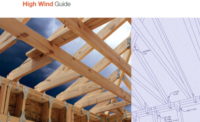In a recent decision of the New York Supreme Court, LAM Group v. Anthony T. Rinaldi LLC, 2022 WL 17881264 (Sup. Ct., NY Co., Dec. 22, 2022) illustrates the importance of meticulously following the procedures set forth in civil practice statues and rules, according to a piece by Duane Morris LLP republished by Lexology.
The owners of a commercial building in Manhattan, New York, brought an action against their contractor, a subcontractor and other construction professionals alleging breach of contract, negligence and other claims in connection with the installation of a stucco façade on their property.
Plaintiffs alleged that pieces of the stucco façade from the exterior of the building dislodged and landed on a neighboring property, causing damage. Eventually, the entire stucco façade required replacement.
The defendant, subcontractor Bayport Construction Group, had performed the masonry and stucco. The subcontractor and another defendant, Nobutaka Ashihara Architect PC (the architect retained for the project) were served with the summons and verified complaint by service on the New York Secretary of State, pursuant to New York Business Corporation Law § 306(b).
However, neither Bayport nor NAA filed an answer or otherwise appeared in the action. Plaintiffs filed motions for default judgment against the two non-appearing defendants. The court found that plaintiffs properly served Bayport and NAA with process and the motion papers, but refrained from entering a default because plaintiffs failed to strictly follow the procedure set forth in the New York Civil Practice Law and Rules.
Generally, an application for default judgment requires the plaintiff to present proof of service of the summons and the complaint, the facts constituting the claim and the circumstances of the default (CPLR § 3215(f)). The affidavits of service show that both Bayport and NAA were properly served with process by service on the Secretary of State. The verified complaint recounts the facts constituting the claim, and counsel’s affidavits lay out the circumstances surrounding the defaults. At first glance, plaintiffs appeared to meet all the steps necessary for entry of a default judgment. However, the motions were denied because plaintiffs failed to present proof of additional service upon the defaulting defendants. CPLR § 3215(g)(4)(i) provides:
“When a default judgment based upon non-appearance is sought against a . . . corporation . . . served pursuant to [Business Corporation Law § 306(b)], an affidavit shall be submitted that an additional service of the summons by first class mail has been made upon the defendant corporation at its last known address at least twenty days before the entry of judgment.”
The court held that plaintiffs failed to show that they had additionally served Bayport and NAA by first class mail at their last known addresses, as required by CPLR § 3215(g)(4)(i). The inclusion of the summons and complaint as exhibits to the default motion were insufficient to constitute an additional mailing called for in the statute, even though the motion papers were properly served. The court denied plaintiffs’ motions for default judgment without prejudice and with leave to re-submit upon proof of the additional service upon Bayport and NAA.
LAM Group v. Anthony T. Rinaldi LLC exemplifies the importance of looking beyond the plain language of a statute, even when it appears to resolve the pending question. No matter how unambiguous the statutory language may seem, other paragraphs and the relevant case law may lead to the unexpected. For example, a closer look at CPLR § 3125 shows that it is also possible to take a default judgment against a plaintiff. CPLR § 3215(c) provides:
“If the plaintiff fails to take proceedings for the entry of judgment within one year after the default, the court shall not enter judgment but shall dismiss the complaint as abandoned, without costs, upon its own initiative or on motion, unless sufficient cause is shown why the complaint should not be dismissed.”
Thus, where a plaintiff has not taken any action to enter a default against non-appearing defendant within one year of the default, the case is deemed abandoned, and the non-appearing defendant may move for entry of default judgment against the plaintiff, or as is more frequently seen, the defendant will cross-move in response to plaintiff’s untimely motion for a default. The failure to comply with CPLR § 3215(c) can be raised by a party other than the defaulting defendant. See HSBC Mtge. Corp. v Hasan, 186 A.D.3d 1495, 1497-98 (2d Dep’t 2020). The court may also enter the default sua sponte.
The plaintiff bears the burden of showing both a reasonable excuse for the delay in timely moving for a default judgment and that the claim is potentially meritorious. See Pipinias v. J. Sackaris & Sons, Inc., 116 A.D.3d 749, 751 (2d Dep’t 2014). The trial court has discretion to determine whether an excuse is reasonable, but the statute gives the court discretion only where there is a showing of sufficient cause why dismissal should not occur. See Myong Ja Kim v. Wilson, 150 A.D.3d 1019 (2d Dep’t 2017). Reversal is warranted if the discretion is improvidently exercised, because the language of CPLR § 3215(c) authorizing a court to dismiss a claim as abandoned is, in the first instance, mandatory.
This story appeared on the Lexology website, as written by Duane Morris.







